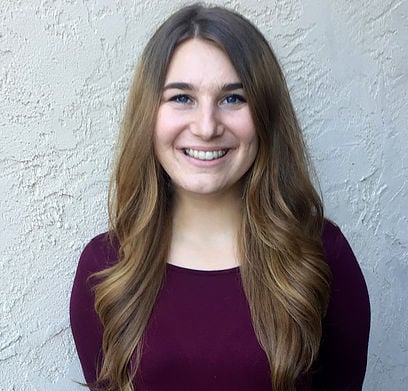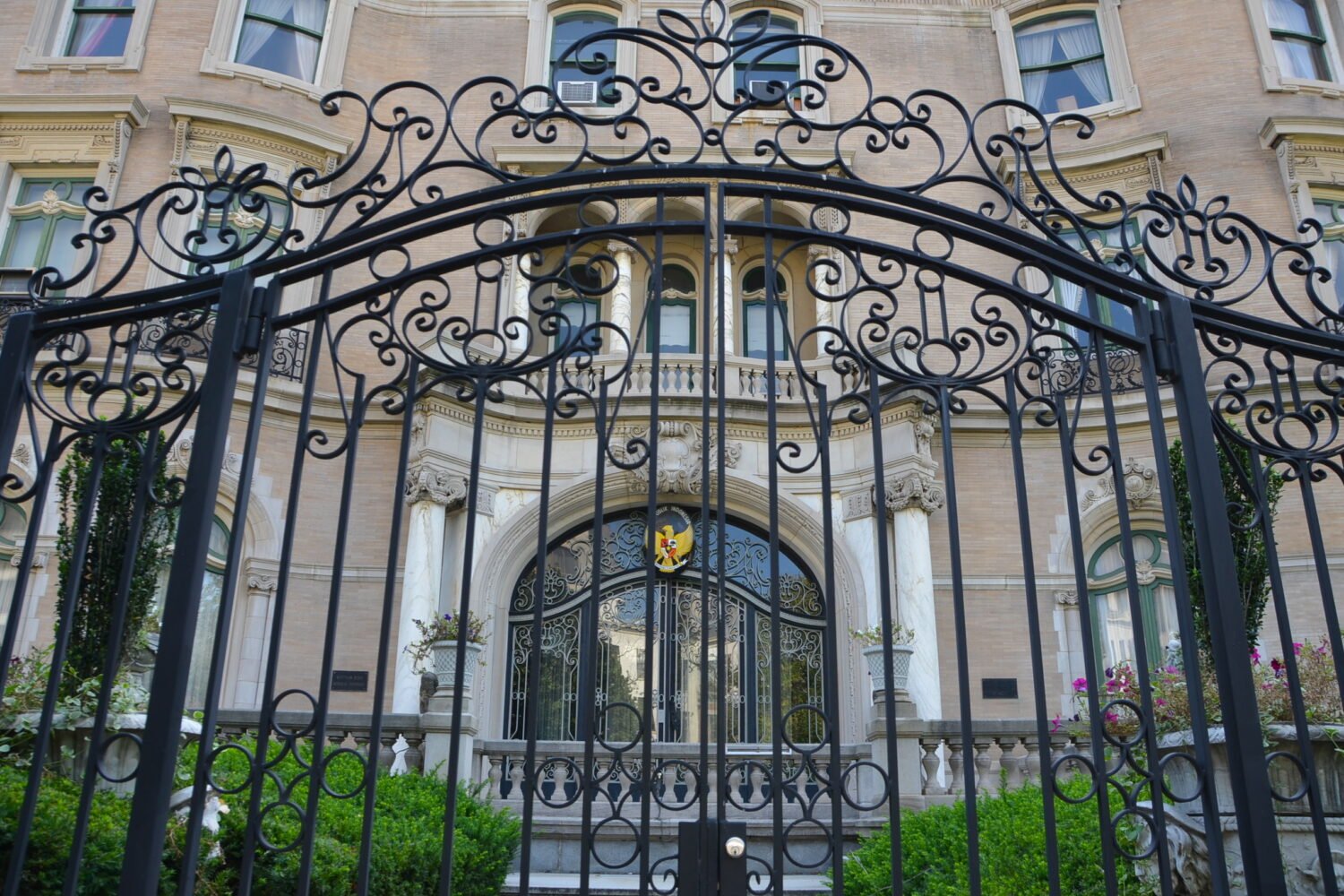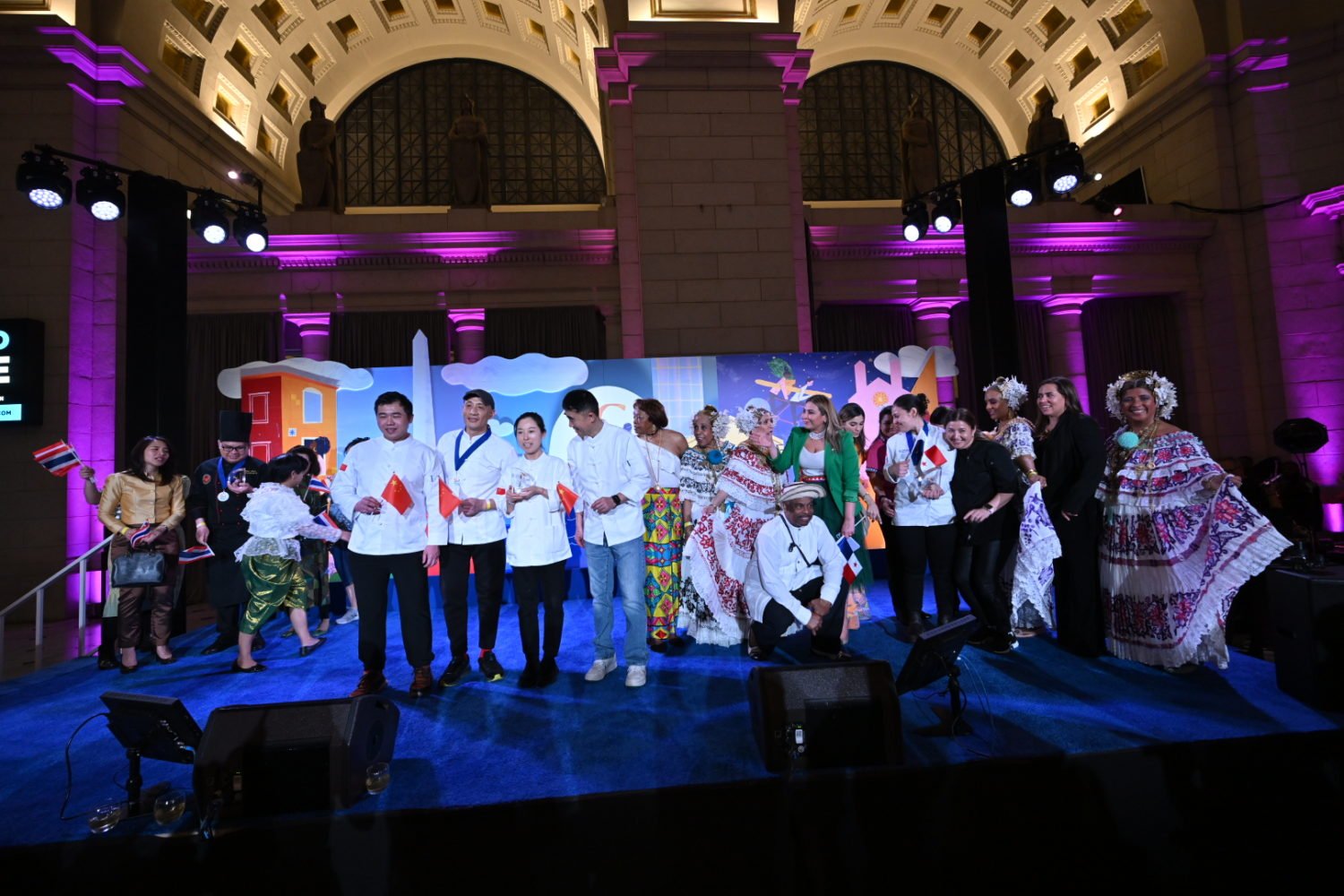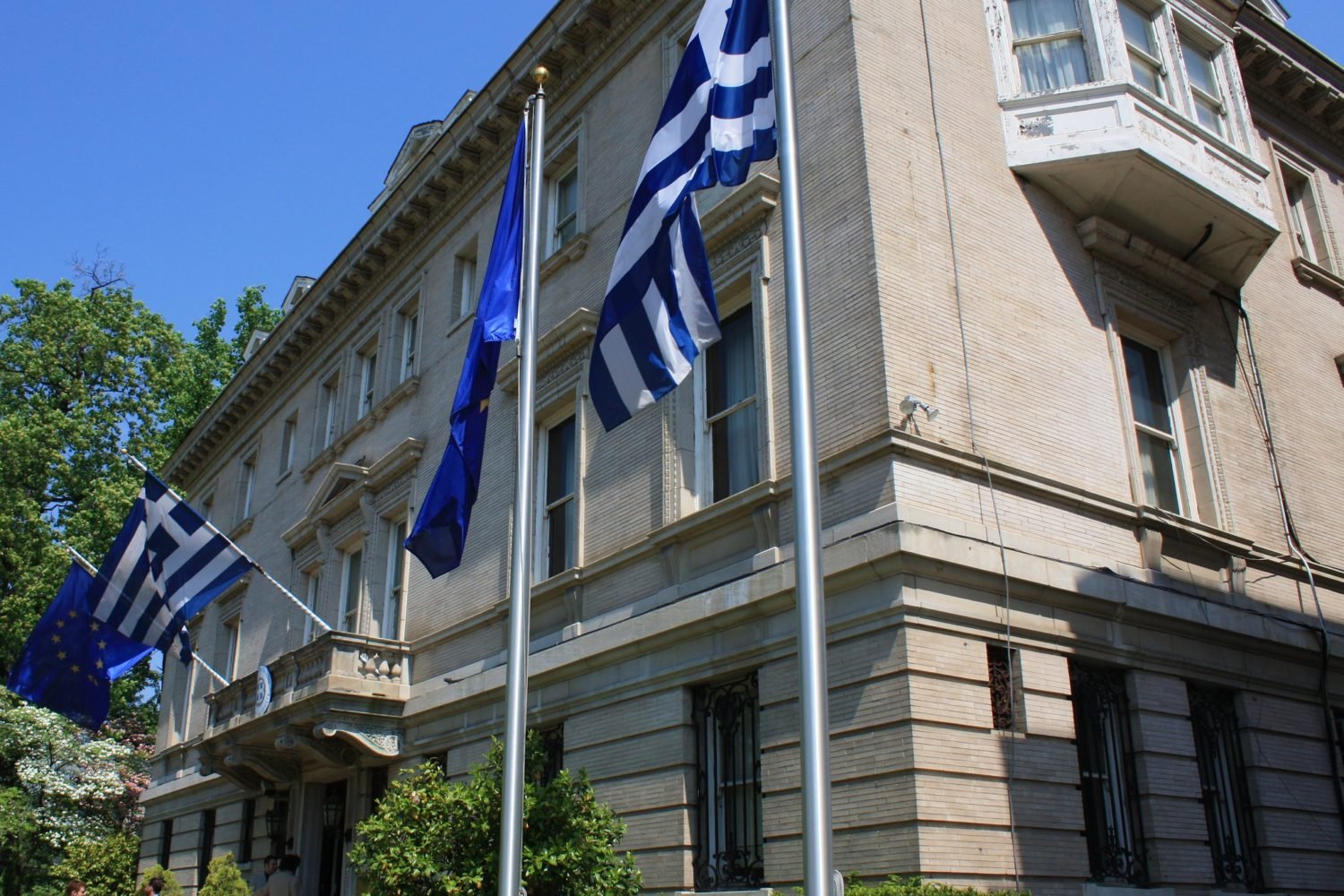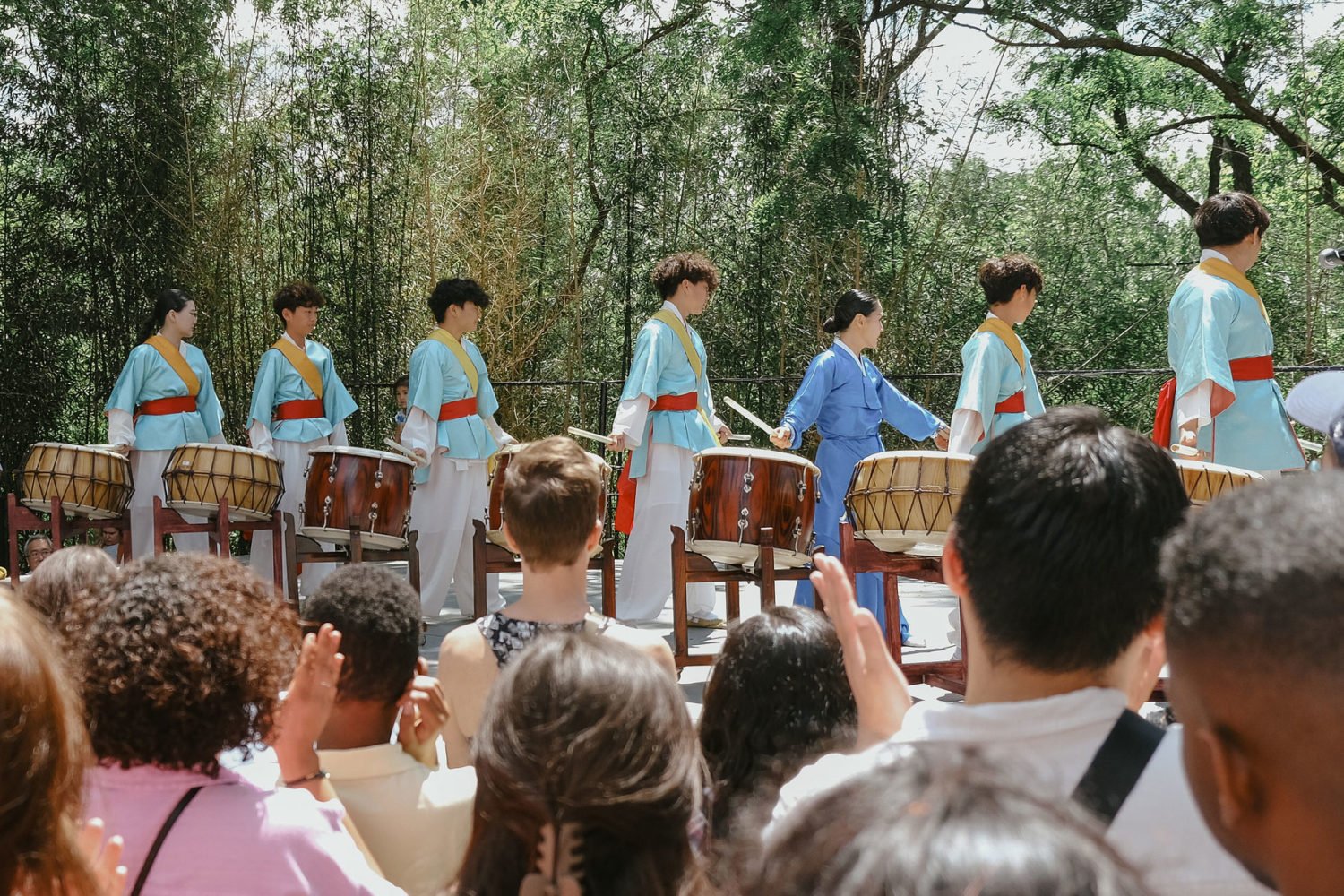After a long and particularly swampy summer, it seems as if winter has finally hit Washington. The leaves on the ground will be buried in snow, and fall jackets are giving way to heavier parkas and piles of scarves. We asked five ambassadors from some of the coldest countries in the world for advice on how to handle winter in Washington, how it compares to home, and what the season means to them. First up is Karin Olofsdotter, the Swedish ambassador to the United States.
How cold is Washington to you compared to your home country?
I’m from the province of Halland in southwestern Sweden. It is the same latitude as Alberta, Canada. I love snow and grew up with snowy winters and cross-country skiing. Unfortunately, as winters get warmer due to climate change, there is less snow cover now. Northern Sweden still gets a fair amount of snow, though. In any event, Sweden never shuts down for snow and cold. In Stockholm, the city authorities clear roads, sidewalks, and bike paths twice every day, seven days a week. A Swedish company was recently the first to build a self-driving snow plow using 4G communications and GPS.
Can you tell me a little about winter in Sweden? How long is it?
Sweden is located fairly north and it’s a very long country. It’s actually the size of California. When I was a child in the 1960s, there were really strong winters in the south where I’m from. Then they kind of disappeared and for many years there wasn’t so much snow. Then in the mid-1990s there were really harsh winters again, so it comes in cycles. There’s not always snow where I come from, but if you’re in Stockholm or in the north, the winters have a lot of snow and people are really outdoorsy— skiing, snow scootering, et cetera. It’s very different. As we’re so far north, it’s very dark. In the northernmost part of the country, you could get two hours of sunshine. That’s why it’s so important that it snows because it brightens it up. Where I’m from, the sun rises at 8 a.m. or 9 a.m. and goes down around 4 p.m. If there hasn’t been any snow it gets extremely dark and muddy.
What do you do during that time? How do you get through it?
There are so many articles about Scandinavian and Danish hygge, and we have the same thing, but it’s called mysig. In the winter time, we consume a lot of candles. Everyone has lit candles in their homes, which I don’t think is a tradition in that many other countries. We always have candlelight on our dinner tables, in our windows, and people like an open fireplace so you stay inside. If it snows, people do go skiing and those kinds of activities. When I lived in Stockholm, the lake and the archipelago freezes over so you can go long skating. It’s a type of ice skating where the skates are very long. It’s like if you went for a long ski run, except if you’re skating on the lake. It’s very cozy in a way.
What do you do to create mysig in the winter time?
My idea would be my parent’s house, sitting in front of the fireplace, drinking whiskey with my dad. Being inside and having the candles lit, friends over for cookie and coffee. We are huge coffee drinkers and together with Finland, we are some the biggest coffee drinkers per capita in the world. I generally just drink black coffee, but it’s much much stronger than the American version. It’s in between an espresso and an American coffee. I drink four or five of those cups every day. That’s very much part of our workplace, drinking coffee together.
There’s a Swedish word for sharing coffee together, right?
Yes, fika. We do that a lot in the winter time. Friends can sit in a cafe or sit inside and share cinnamon rolls or coffee or hot chocolate or whatever you’re having. There’s a very strong cafe culture in Sweden. At the embassy at 10 a.m. and 3 p.m., we have spontaneous fikas where we go and maybe for like 10 minutes chit-chat with our colleagues. On Fridays we have an institutionalized fika. We rotate who is responsible for bringing the bread and the cookies to the fika, and you’re dead meat if you forget. Forgetting is like the worst thing that could happen to you.
We work really hard, but when you take a break, people are more creative. You talk to colleagues who you maybe don’t talk to all the time and create new ideas. These breaks are kind of misunderstood as just a nice social thing, but when people get together like that over a cup of coffee you relax and share ideas. It increases our creativity and productivity. It’s misunderstood in many other countries and work environments. It’s fun and light but it actually has been proven to increase productivity.
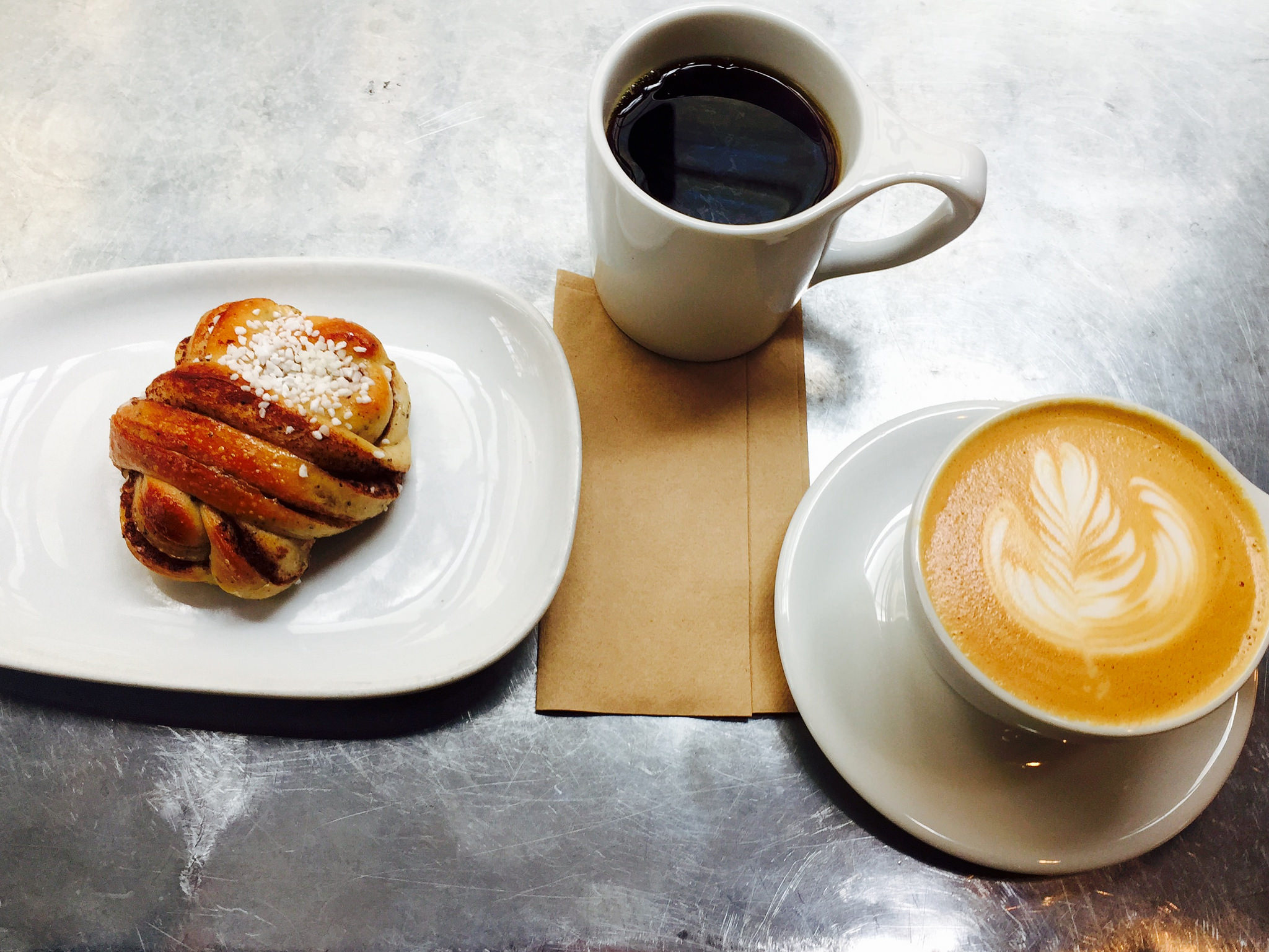
Do you stock up on any winter essentials? What are they?
I stock up on tea candles from Ikea for a candlelit home here in DC. I also buy glögg; it’s like mulled wine.
Is there anything you really like to bake or eat during winter?
For December for all our Christmas feasts, we have a kind of cinnamon roll or that kind of dough but we make it with saffron in them. We had a king, Charles I, who brought it. I think it came in even longer ago, it was brought in with the Vikings when they traded. Saffron is something that grows in our culture and it’s always extremely expensive, but that’s why it’s only for Christmas season. This has become a tradition in December.
Do you find it cold in DC and how do you get to work in the winter here?
I drive to work. In Sweden, we have to change tires in the wintertime, but here I don’t. I know it’s slippery and that can cause a lot of accidents, so I’m very careful when I drive here in the wintertime. I also know people here aren’t so accustomed to driving in the snow and the cold and the ice. When I served here as the deputy ambassador in 2009, I think it was when the snowstorm hit Washington. In 2010, it was Snowmageddon. I actually walked to work then and it took me an hour. My ambassador at the time actually skied. He cross-country skied, too.
What are you doing for the holidays?
Christmas is very important, and we have a tradition called Lucia. It’s to celebrate an Italian saint, St. Lucia, who comes in the light. In school they have Lucia training, so they sing songs and they come on the 13th of December. It’s a feast of candles and a feast of light, because it’s so dark in our culture so it’s very fitting to celebrate light. You choose usually the prettiest girl to be the Lucia. The tragedy of my life is I have never been Lucia because it was always the ones with the long blonde hair who got to be Lucia (laughs).
We also have a huge Christmas party at the House of Sweden that’s two days in a row, 500 people on one night and then 500 people on the other night. We serve traditional Swedish Christmas food with a modern twist and a Lucia performance and then we decorate the embassy Christmas tree. It’s maybe three meters high because it’s a fairly high ceiling.
My kids are 15 and 17. We drive around and look at Christmas lights and it’s really fun. My daughter is really into ice skating, so we’ll go to the ice skating rink close to the embassy.
What do you think of how people react to the snow here?
I am surprised at how much the schools close. I’m over-exaggerating, but a little white powder on the ground and schools close. Maybe it’d be worthwhile to really invest in school buses with winter tires. I have teenagers in high school so they can stay at home, but if you have little kids then the parents have to stay at home. That’s not so good for the companies or the workplace.
I can see that with the relatively rapid change of seasons here in DC, the onslaught of cold and snow startle. That’s why I like the distinct four seasons in Sweden. I think most Washingtonians admire the majestically looking snow-covered Mall, though, and the still and quiet of a snowfall.
What do you wear during the winter here and how do you stay warm?
In Sweden we say to our children “there is no bad weather, only bad clothes,” as we prompt them to head out on a cold day. I bundle up in knitwear and parkas. I have a huge down winter coat I bought here 10 years ago. When I started out as a diplomat in Moscow I had a fur coat because there you really need one. I make sure I have boots that are not too slippery and of course a hat and gloves. The reward coming inside afterward is my glögg in front of the open fire! It’s not really super cold so the problem is usually that you put on too much. It’s colder here in the summer with the air conditioning (laughs). You have to wear more clothes here in the summertime than you have to in the wintertime.
Do you head outdoors or stay inside when it snows?
I head straight outside, work permitting. Short of cross-country skiing, walking in the snow is wonderful exercise! I have a dog now and my daughter ice skates every Saturday out by Cabin John. I walk in the forest with my dog every day during winter. You can go out there and see the change of seasons, it’s very beautiful. What I really like about Washington is there’s so much nature in the city. Rock Creek Park and all that is real wilderness. My dog is a mixture between a chihuahua and we think a mini pinscher. Her name is Raven and we got her from a shelter in Fairfax called Homeward Trails.
Do you have a favorite winter memory and is there something you really miss about home? Do you have a favorite winter memory since coming to DC?
One of my first memories was from when I was a very small child, 4 or 5-years-old, in the winter of 1969 or 1970. My father had dug a walking path through the garden and the snow was higher than my head, it’s still an extremely strong memory. I just had the feeling that it was higher than me. The other thing is when all the food stores were empty with the Snowmaggedon in 2010. Despite the havoc, the snow brought about some good things, such as “snow socials” where neighbors got to know each other over snow shoveling and some unexpected spare time.
This interview has been edited and condensed.
A version of this article appears in the January 2019 issue of Washingtonian.


